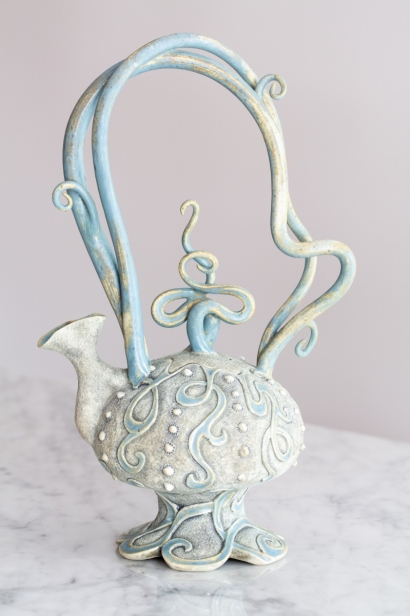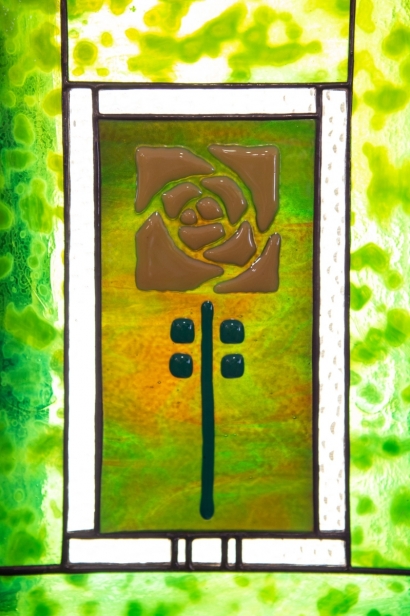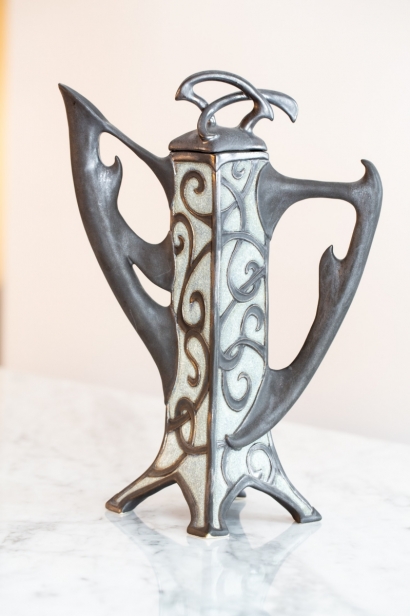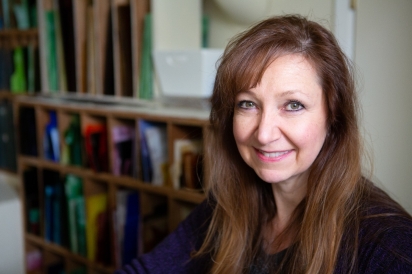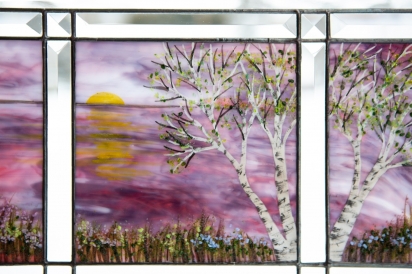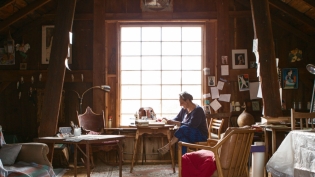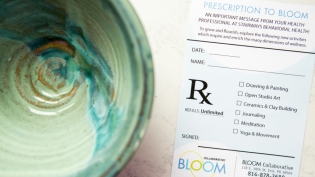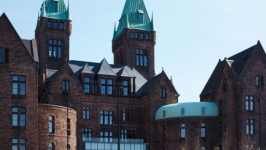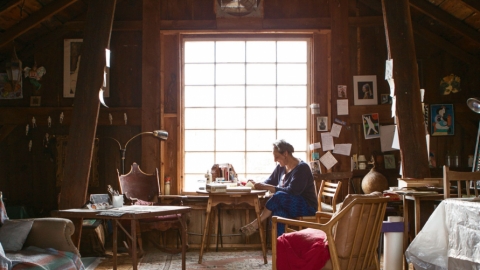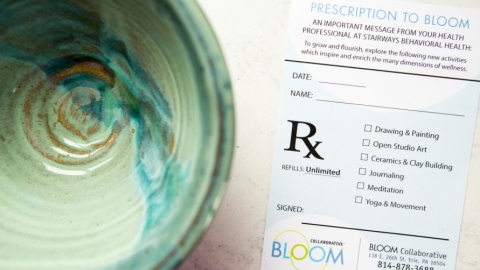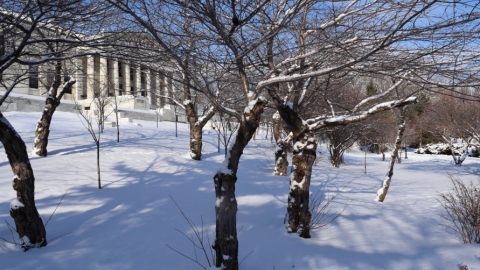The Roycroft Ethos and Contemporary Artists
In Western New York, “arts and crafts” is often associated with the architecture of Frank Lloyd Wright. While excellent examples of Prairie style architecture exist throughout the region, exploring the cultural significance of how the Roycroft Campus in East Aurora galvanized the movement is still central to the Arts and Crafts ethos. The movement has continued to inspire artists over the years, and it remains fundamental to the work of contemporary artists.
In the late 1800s industrialization was stepping on daily life. The Arts and Crafts movement emerged as a reaction to the effects of industrialization, which many believed were deteriorating morals and craftmanship. Hubbard’s philosophy favored a return to values of the Middle Ages—a period when deep commitment to hand-crafted work and community guilds was nurtured.
Originating in England, the Arts and Crafts movement arrived in the U.S. in 1894, primarily because of Elbert Hubbard. A successful salesman and part owner of Larkin Soap Company in Buffalo, Hubbard was more interested in overseas travel, writing and publishing. Shortly after returning from a trip in 1895, Hubbard sold his share of the Larkin company and set up the Roycroft Press in East Aurora to pursue his passion for writing. Hubbard’s print shop inspired him to expand his interests and create a utopian society where artisans could concentrate on their craft and quality production, surrounded by supportive colleagues.
Founded as a self-publishing printing press for Hubbard in 1895, the Roycroft Campus evolved into a community of more than 500 working artists and craftspeople within 20 years. Around the same time, Art Nouveau—coinciding with the Arts and Crafts movement—was not concerned with the social reform movements of the day. Instead, it addressed the clutter and eclecticism of mid-19th-century European taste. Designs typically featured curved lines along with asymmetrical arrangement of forms and patterns. Popular motifs adopted from nature included flowing grasses, lilies, vines, botanicals, and profile contours found in peacock feathers, butterflies and insects.
The Arts and Crafts movement didn’t promote a particular style; it advocated social reform and sparked a critique of industrial labor. As modern machines replaced workers, Arts and Crafts proponents called for an end to the division of labor and advanced the designer as craftsperson. Arts and Crafts designers sought to improve standards of decorative design and to create environments in which exquisite workmanship governed.
Contemporary Artists
After a period of inactivity and deterioration, the campus found new life in architectural restoration and encouraging artisans to return. By harnessing the cultural capital Hubbard accrued over the years as incubator of the Arts and Crafts movement in the U.S., artists established a new community in a historic place.
Formed in 1976, the Roycroft Artisans at Large Association was thought of as the Roycroft Renaissance, with a mission to preserve Hubbard’s philosophy of artists working in a collaborative community. It was hoped that the association would inspire creativity and high-quality craftmanship. The juried group of artists echo Hubbard’s ideals, work ethic, sense of purpose, and community-minded approach in nurturing other artists. Techniques, stylization and themes of nature that appeared in the early work of Roycroft artisans reappear in contemporary work. Artists work in a variety of mediums that were also used in the early days such as woodworking, furniture design, stained glass, metalsmithing and jewelry, copper, clay, leather and printmaking.
Although there are many members of the association with incredible talent and commitment, I had a chance to speak with Ann Perry Smith, a skilled potter who uses her memory of her grandfather’s collections and turns them into 3D pieces of art. To achieve intricate layers of texture, Perry Smith combines techniques such as carving the clay, adding floral motifs and texturizing the surface during the clay’s leather-hard phase with leather embossing tools. The texture is an homage to the leather-bound books Hubbard printed on the Roycroft Press a century before. Undulating lines, floral motifs and asymmetrical balance are attributes of Art Nouveau and repeat the organic inspiration Ann uses in the creative process. The exquisite design elements, metallic luster glazes, multiple trips to the kiln and attention to detail are sublime and could stand alone even if dislodged from the rest of the piece(s).
Pottery is remarkably intertwined with the elements of life and beliefs of reincarnation: earth, water, fire and air are vital to life and the creative process. The idea of reincarnation may be an unintentional subtext within Perry Smith’s work.
Another group of juried artists connected to the Roycroft is the Arts and Craftsmen Guild, formed in 2015. Most of these artists currently work on the grounds of the campus. Hubbard’s ideals are central to the success of the artists; preserving the spirit of the Roycroft is (still) more about the education of all than the illumination of a select few. Rebirth of a design from the early 1900s sets the stage for modern artists that connects past to present.
Yvonne M. Stoklosa is a Roycroft Campus artist-in-residence and founding member of the Guild who works with glass. During our interview, she offered thoughts about working on the campus and how it cultivated a creative bond among artists. She explained that the qualities artists bring such as craftmanship, cohesive design, knowledge of their medium and materials, and equality are vital to their work just as they were 100 years ago.
Stoklosa’s glasswork is inspired by nature. According to Stoklosa (and her artist statement), glass is a medium that can be worked cold (stained glass), warm (kiln-formed glass), and hot (blown glass). Her knowledge and mastery of the medium can be seen in her completed pieces.
The stylized rose is a recurring theme that has aged well without losing artistic integrity and can be found in the recent work of several members of the Arts and Craftsmen Guild. William Joseph "Dard" Hunter was a multi-medium artist known for the stylized square rose he created, which is still embedded in stained glass windows at the Roycroft Inn. With its simple lines and omission of ornamentation, the stylized rose morphed into a round design by Charles MacIntosh in the early 1900s, and again into a triangle version found in the logo of the Guild.
The enthusiasm for positive collaboration between craftspeople, community and campus was obvious in the artists I spoke with, the manager of the Roycroft Inn, owners of the antique shop and a few artisans in the gift shop while I was there.
Elbert Hubbard passed away with his second wife in 1915 while onboard the RMS Lusitania, when it was destroyed by a German submarine in the Irish Sea. His spirit never left the Roycroft and contemporary artists use it a guiding principle in their work more than a century later. Perhaps the longevity and endurance of the Roycroft is essentially Elbert Hubbard’s magnum opus.



